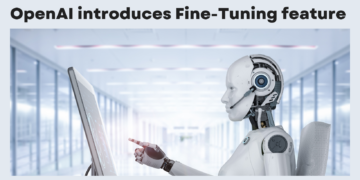Generative validation represents an innovative facet of Artificial Intelligence, specifically tailored to assess and validate outputs generated by AI models. Unlike conventional validation methods that rely solely on predefined metrics, generative validation introduces a secondary AI model to provide an additional layer of assessment. This approach becomes particularly valuable in scenarios involving subjective or intricate outputs, where traditional evaluation metrics may fall short.
At its core, it acts as a checkpoint in the AI model’s decision-making process. When faced with uncertainty or complex data, the primary AI model signals for generative validation. A secondary generative AI model steps in, offering a “second opinion” on the output. This dual-check mechanism aims to enhance accuracy, minimize errors, and introduce a level of objectivity to the validation process. It is versatile and finds application across diverse domains, ranging from document processing and robotic process automation to creative fields such as music generation and image creation. As a nascent yet promising concept, generative validation reflects the ongoing evolution in AI methodologies, addressing challenges in assessing outputs that defy traditional evaluation approaches.
Navigating Data Complexity with Generative Validation in IDP
High Data Complexity
Within IDP, documents often present varied formats and unstructured data, posing a challenge for accurate extraction and verification. Enter generative validation, a vital tool seamlessly navigating complex data structures to ensure precision in information retrieval.
Error Reduction
The technology significantly reduces human error in manual review processes within IDP. This results in tangible cost savings and a notable enhancement in overall data quality, supporting reliable decision-making.
Profitability Through Precision
The increased accuracy in data extraction directly contributes to better decision-making processes in IDP. The technology enhances customer experiences and has the potential to elevate profits as businesses operate with more precise and reliable information.
Streamlining Operations: The Impact of Generative Validation in RPA
Automation Potential
In RPA, where document validation tasks traditionally required human intervention, generative validation proves valuable. It automates these tasks, increasing operational efficiency and freeing up resources for more strategic endeavors.
Minimizing Errors
Generative validation in RPA minimizes errors in data handling and RPA bot actions, ensuring smoother operations and additional cost savings. The reduction in errors is a key factor in enhancing overall process efficiency.
Driving Profitability Through Efficiency
The combination of increased automation and reduced errors in RPA translates into significant cost savings and improved operational efficiency. Generative validation is proving to be a practical choice for businesses seeking a streamlined workflow that directly impacts the bottom line.
Choosing the Path: IDP and RPA vs. Long-Term Innovation with IA
Immediate Profitability: IDP and RPA
Generative validation’s immediate impact is most evident in IDP and RPA. These areas, focusing on real-world tasks, experience direct cost reduction through automation and error reduction. The swift impact on data accuracy and operational efficiency makes IDP and RPA practical choices for businesses seeking immediate improvements.
Long-Term Potential: IA
While IDP and RPA offer immediate benefits, Intelligent Automation (IA) holds longer-term potential through improved model performance and innovation. Generative validation plays a role in the continuous improvement of AI models, setting the stage for long-term profitability and adaptability.



























